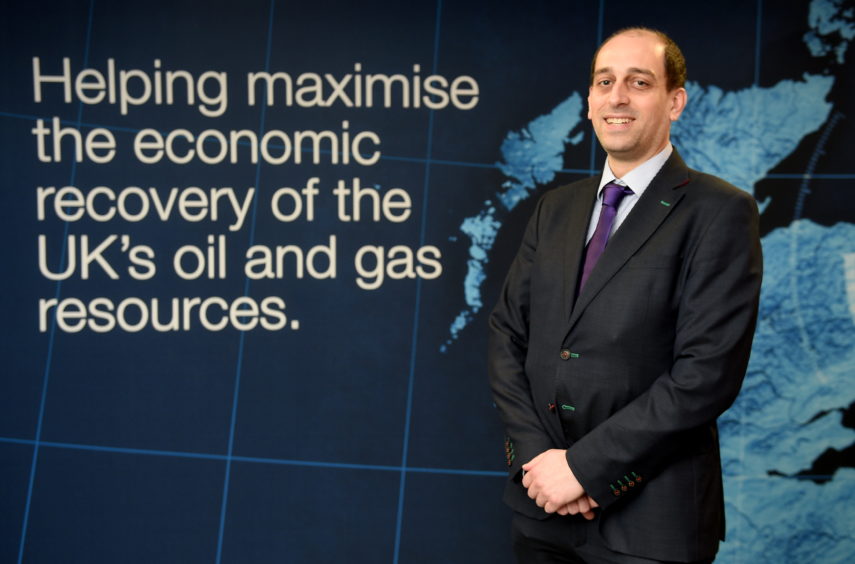
New North Sea discoveries have acted as a “beacon” for the rest of the industry, according to the Oil and Gas Authority’s (OGA) head of exploration.
It was only last year that exploration drilling hit rock bottom in the UK sector with just eight wells drilled, the lowest level since the 1960s.
However, late-2018 and early-2019 brought two large discoveries – Glengorm and Glendronach – which have made firms look again at the region, Nick Richardson said.
He said: “It always helps when you’ve had a couple of big discoveries under your belt.
“I think they’ve served as a beacon to the rest of the industry that now companies have started to sit up and look at the North Sea again.
“They see that what was previously written off as a mature basin actually does have some big, impactful potential still sitting there.”
Glendronach, discovered west of Shetland in September by Total was, at the time, the biggest find in a decade. It could produce 175 million barrels of oil equivalent.
It was then surpassed by Cnooc’s Glengorm discovery in the central North Sea, with potential for up to 250m barrels.
From an exploration perspective, they represent two very different prospects.
Mr Richardson said: “Glengorm is something that has been sitting there and known about as a prospect for a long time, about 15 years. It has been through a number of hands in terms of different operators.
“A challenging well, but it finally got drilled and they could see there’s potential for a sizable discovery there.
“Glendronach on the other hand only came onto our radar relatively recently. Total had it mapped as a kind of concept and it was very rapidly put onto their drilling schedule.
“They drilled it and it looks very promising indeed, not just on its own but in terms of the potential for similar types of discovery that could be along that trend.
“The North Sea is great because it can encompass lots of different business strategies.
“You can be a relatively small company chasing undeveloped discoveries, a mid-sized company with producing assets or a larger operator where you need something that really does make an impact in terms of your global portfolio.
“These discoveries are particularly important from that perspective.”
These big finds come at a good time for the OGA.
The regulator is on the verge of announcing its awards for the 31st licensing round, which focuses on frontier areas, and that’s ahead of launching the 32nd round later this year for mature regions.
Mr Richardson said the 31st round has proved more popular than its last auction for frontier areas awarded in 2017.
Along with the 31st has come a supplementary round for the Greater Buchan Area in the outer Moray Firth.
The region had some disappointment recently, when Equinor, Jersey Oil and Gas and Cieco found out that their Verbier discovery holds just 25m barrels of oil equivalent.
They had been hoping for well over 100m barrels.
Despite this setback, the OGA sees the area’s potential through a holistic approach.
Mr Richardson said: “We’re evaluating the applications and will make the awards as soon as possible.
“It’s certainly an area that we have high hopes for with Buchan as a hub and then the surrounding prospectivity and discoveries tied into it.
“I think this is the first step in a longer journey.
“It has demonstrated to us the value of taking areas thematically.
“Us doing some work, saying ‘this is our view as the OGA’ and then how we can then get industry to best act upon what we or they think should be done to maximise the potential in a particular area.
“I think industry can expect that in the future we might do similar types of things, maybe not as discrete rounds that exist within licensing rounds and say this is something we want to be tackled holistically.”
Drumming up interest and extracting value from mature areas has its own set of challenges which the OGA will need to contend with for the 32nd round.
To do so, it is providing a suite of products with vast sums of information on the licences on offer across the UK sector, such as rock physics studies, a geochemical database and a “megamerge” with 23,000 square kilometres of seismic data on the southern North Sea.
Putting the data into new hands will bring new possibilities, according to Mr Richardson.
He said: “I’m constantly surprised when you’ve got two different teams looking at the same area, and working independently they can come up with different ideas.
“By broadening the access to the data, you get that breadth of knowledge and experience which can bring out new ideas and concepts which can be exploited.
“By getting someone else to look at it you will find something different. It’s an interpretation, there’s no single version of the truth, and it very much depends on the individual scientist.”
Recommended for you
